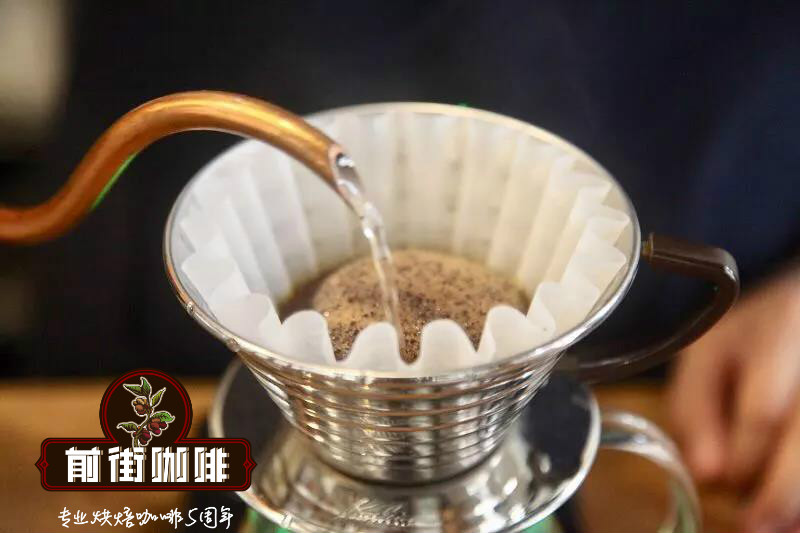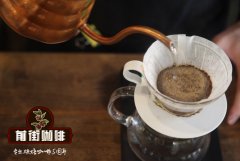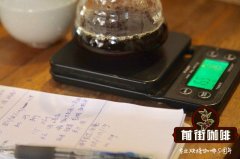What's the flavor of Indian-style coffee? How can the Indian monsoon Malaba taste good?

Professional coffee knowledge exchange More coffee bean information Please pay attention to coffee workshop (Weixin Official Accounts cafe_style)
Coffee became the first drink in the world only after 1600 years, so the recorded history of coffee is only 400 years, which is similar to Taiwan's history. Africa is generally recognized as the home of coffee, originating in Ethiopia and spreading to all parts of the world through the port of Mocha in Yemen. The Arabs, however, wanted to avoid coffee being grown in other countries, so all coffee beans could only be exported after being shelled. However, there is a gap in every secret, saying that the first coffee spread from the Muslim area of Yemen, about 1600 years (17th century), to Mecca City pilgrimage Baba Budan (BaBa Budan) will be able to sprout seven coffee beans hidden in the belly secretly brought home to southwest India, since then, opened the spread of coffee in the world history. This part of southwestern India is now Indian Malaba.
Wind-stained coffee is a new flavor created unintentionally. From the seventeenth to the eighteenth century, India shipped coffee beans to Europe on sailing ships. Each trip took six months. The raw beans were placed in the bottom of the ship's warehouse and absorbed the moisture and salt of the sea. The raw beans arrived in Europe and deteriorated. The color changed from dark green to brown rice. The acid flavor of coffee almost disappeared, but unexpectedly developed a strong nut and grain flavor. It tasted full and had a taste of black rice tea. Nordic people love this golden alternative coffee. When the Suez Canal opened in 1869, and steamships were introduced, shortening the journey time between India and Europe, customers complained that Indian coffee was "stale" and lost its attractive yellow and nutty flavor. Orders dropped sharply, and Indian exporters began to explore solutions. The original coffee shipped to Europe, the time shortened by more than half, too late to mature into "transformation", lost the original flavor, so exporters thought of the southwest of India Maraba coast every year from late May to September there is a salty and humid environment blown from the Indian ocean, after several experiments really produced a similar golden yellow acid-free coffee, so named "monsoon coffee", commonly known as wind stained coffee.
At present, the production method of wind-soaked beans is to first select good raw beans and transport them to the coastal wind-soaked field. They are spread out to be blown by the humid southwest monsoon. Experienced workers often stir the beans and let them be evenly blown by the wind. This process lasts for four to 16 months. The beans will grow to nearly twice their size and turn yellow and white. They will become the unique Indian wind-soaked maraba.
Indian Malaba Coffee or Monsooned Malaba Coffee has always been popular with Europeans, and this wind-stained coffee is a new flavor that has been inadvertently created. From the seventeenth to the eighteenth century, India shipped coffee beans to Europe by sailboat. It took six months for each trip. The raw beans were placed in the bottom of the ship's warehouse and absorbed the moisture and salt of the sea. The raw beans arrived in Europe and deteriorated. The color changed from dark green to brown rice. The acid flavor of coffee almost disappeared, but unexpectedly developed a strong nut and shell flavor. It tasted full and had a taste of black rice tea. Nordic people love this golden alternative coffee. When the Suez Canal opened in 1869 and steamships were introduced, shortening the time of travel from India to Europe, customers complained that Indian coffee was "stale," losing its attractive tan and nutty flavor, and orders plummeted. Indian exporters began to look for solutions. The original coffee shipped to Europe, the time shortened by more than half, too late to mature "transformation", lost the original flavor, so exporters thought of the southwest of India Maraba coast every year from late May to September there is a salty and humid environment blown from the Indian ocean, after several experiments really produced a similar golden yellow sour coffee, so named "monsoon coffee", commonly known as wind stained coffee.
Wind-stained coffee needs to be made from sun-dried beans, and the wind-stained factory faces west in order to meet the salty and wet monsoon blowing from southwest. Coffee beans are laid flat in the wind stain field, the windows are fully opened, and the bags are re-entered after the wind stains to a certain extent, but the coffee beans cannot be filled too full, and the coffee bags cannot be piled too tightly to avoid airtight and moldy, and the coffee beans should be poured out from time to time to replace the sacks to avoid breeding mold, which is quite time-consuming and labor-consuming. The air-curing period is about 12 to 16 weeks. After ripening, the beans are further fumigated to drive away weevils. Finally, the beans are manually sifted to remove failed beans that have not turned golden. After three to four months of wind soaking, green coffee beans expand one to two times in volume, weight and density decrease, moisture content is about 13%, quality and quantity have significant changes.
Front Street Coffee suggested brewing parameters:
kalita trapezoidal three-hole filter cup, medium coarse grinding, water temperature 86℃, powder water ratio 1:12, brewing time (steam-start timing): 1 30", remove the filter cup and then add 30 grams of water.
It has a strong wheat tea fragrance, chocolate, nut flavor is obvious, sweet feeling is more sufficient.
Important Notice :
前街咖啡 FrontStreet Coffee has moved to new addredd:
FrontStreet Coffee Address: 315,Donghua East Road,GuangZhou
Tel:020 38364473
- Prev

What's so special about Laos coffee culture? How should I drink Laos coffee?
Professional coffee knowledge exchange more information about coffee beans Please follow the coffee workshop (Wechat official account cafe_style) Coffee is the fifth largest export product of Laos. The Boloven Plateau (Bolaven Plateau), located in the south, is the largest coffee growing area in the country, where about 95 per cent of Lao coffee is produced. The planting area is located at 15 degrees north latitude, from 600 to 1300 meters above sea level, covering an area of more than 5.
- Next

What is Indian monsoon coffee? What are the flavor characteristics of Indian-style Malaba coffee?
Professional coffee knowledge exchange more coffee bean information Please follow the coffee workshop (Wechat official account cafe_style) it is said that a long time ago, when raw coffee beans were shipped from India to Europe, changes were caused by high temperatures and moisture in the Indian Ocean, and this is where "wind stains" came from. In addition to the expansion and enlargement of the size of the raw beans after wind-soaked, the color of the raw beans is also changed from green to green.
Related
- Does Rose Summer choose Blue, Green or Red? Detailed explanation of Rose Summer Coffee plots and Classification in Panamanian Jade Manor
- What is the difference between the origin, producing area, processing plant, cooperative and manor of coffee beans?
- How fine does the espresso powder fit? how to grind the espresso?
- Sca coffee roasting degree color card coffee roasting degree 8 roasting color values what do you mean?
- The practice of lattes: how to make lattes at home
- Introduction to Indonesian Fine Coffee beans-- Java Coffee producing area of Indonesian Arabica Coffee
- How much will the flavor of light and medium roasted rose summer be expressed? What baking level is rose summer suitable for?
- Introduction to the characteristics of washing, sun-drying or wet-planing coffee commonly used in Mantenin, Indonesia
- Price characteristics of Arabica Coffee Bean Starbucks introduction to Manning Coffee Bean Taste producing area Variety Manor
- What is the authentic Yega flavor? What are the flavor characteristics of the really excellent Yejasuffi coffee beans?

